Wandering the maze of alleyways and storied streets of Valencia Old Town is to step back in time on a journey through Roman, Islamic, and medieval history.
The oldest part of Valencia, Ciutat Vella, was once entirely behind defensive walls, and the remaining imposing gates provide a dramatic entrance. Further divided into six barrios (neighborhoods), it’s within the central medieval core and the El Carmen quarter where you’ll still find many of Valencia’s best attractions, museums, and restaurants.
From standing in awe at the magnificent UNESCO-listed silk trading exchange and marveling at the 13th-century Gothic-style cathedral, to sipping on local cocktails crafted from cava before devouring mouth-watering paella, here’s everything you need to see and do in Valencia’s Old Town.
Learn the City’s Silk Story at La Lonja
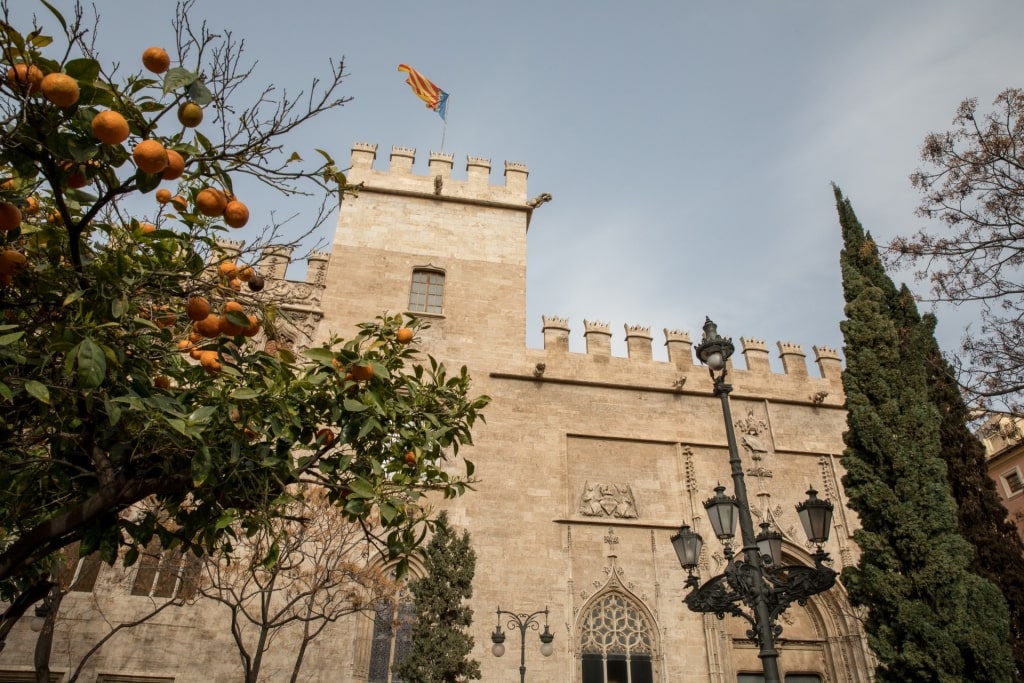
La Lonja
UNESCO-listed La Lonja de la Seda (the silk exchange) tells the story of a city intricately linked with trade and is the perfect place to start your introduction to Valencia Old Town.
Constructed between 1482 and 1533, this cluster of glorious late-Gothic buildings cemented the city’s status as a center for commerce and helped the industry flourish in the following centuries.
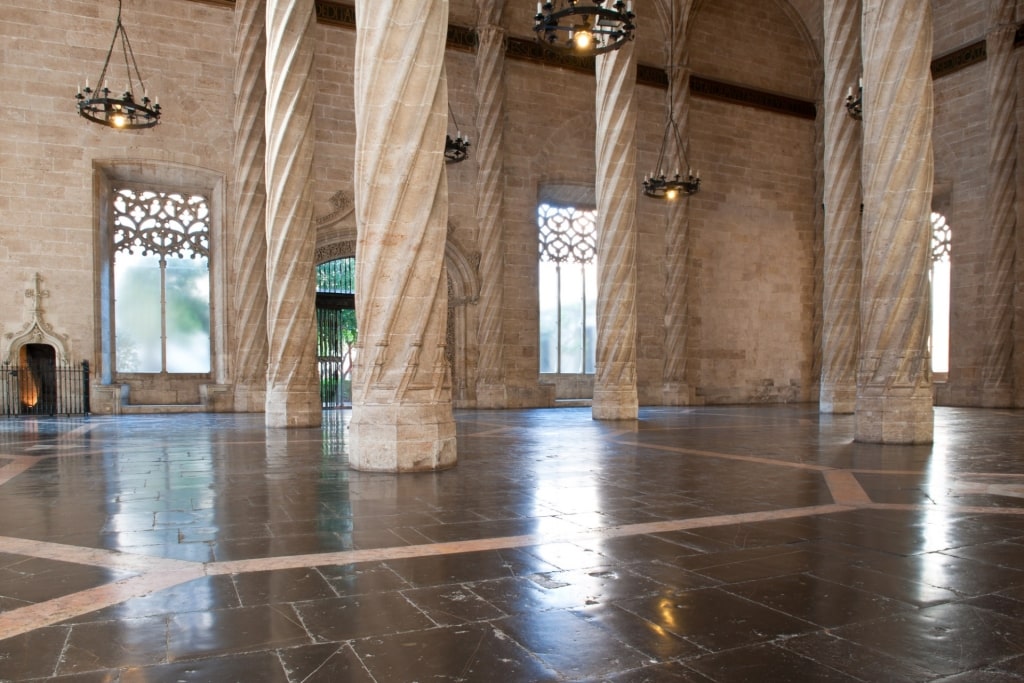
La Lonja
Inside the impressive Sala de Contratación, you can walk among the towering, twisted pillars which support the main hall’s vaulted ceiling before exploring the orange-tree-scented courtyard and climbing the tower.
Magnificent marble floors, gargoyle-adorned windows, and gilded chambers add to the splendor while providing a reminder of Valencia’s historical importance and wealth.
To learn more about the city’s silk trade, all the way up until the 18th century, make a brief visit to the nearby Valencia Silk Museum, housed in the 15th-century Silk Makers Guild.
Visit Valencia Cathedral and El Miguelete
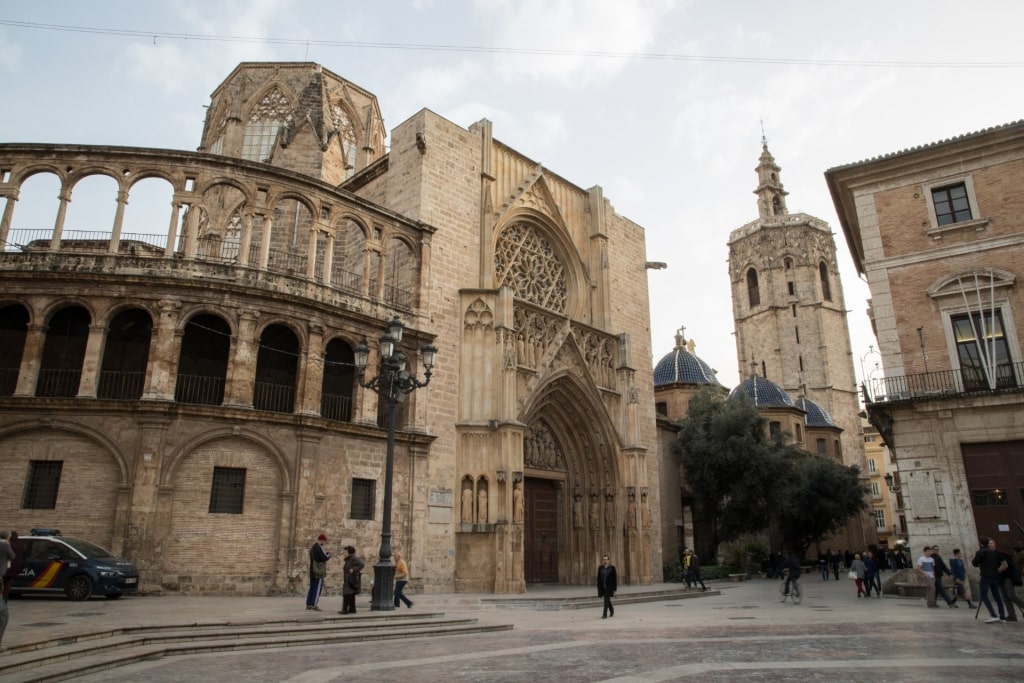
Valencia Cathedral
Valencia Cathedral is a mesmerizing mix of gothic, romanesque, and baroque styles—a fitting architectural feast for a building constructed above what was once a mosque and, before that, a Roman temple.
The oldest parts of the cathedral date back to the 13th century, and even before stepping inside, the ornate details of the baroque main entrance, the Door of the Irons, will leave an impression.
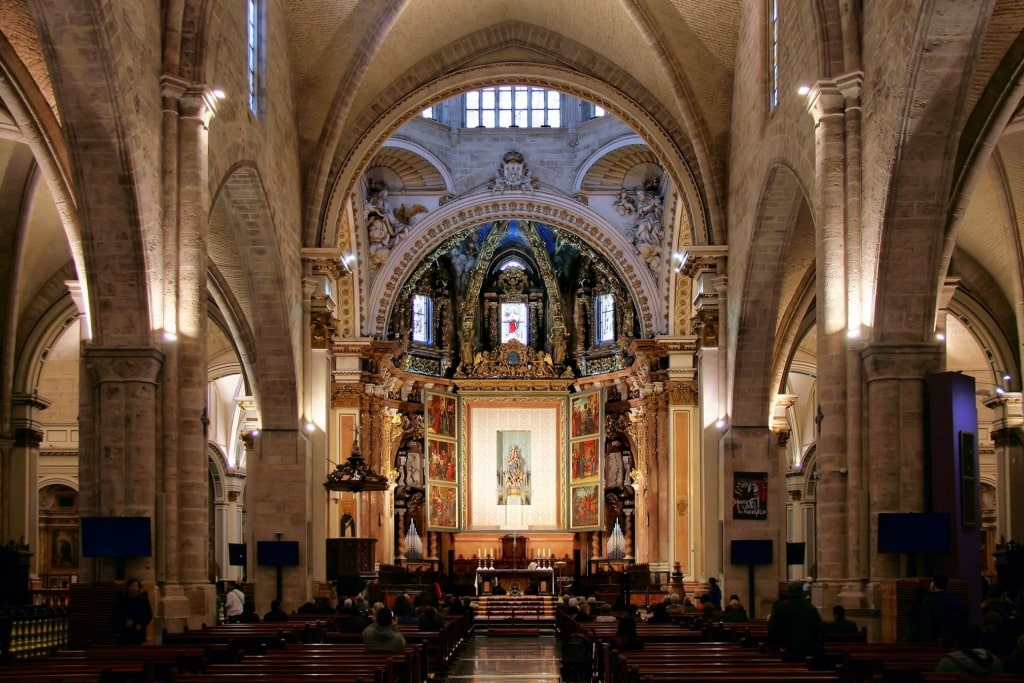
Valencia Cathedral Photo by Jorge Franganillo on Flickr, licensed under CC BY 2.0
Inside, expect your eyes to be busy admiring the various architectural and artistic feats adorning one of Spain’s most famous landmarks. From the Holy Grail of Valencia, believed to be the actual cup to have been used at the Last Supper, to the main altar’s Italian frescoes, there is no shortage of treasures to admire.
Expanding on this, The Cathedral Museum hosts a collection of works spanning different styles, with Goya’s oil paintings being particularly impressive.
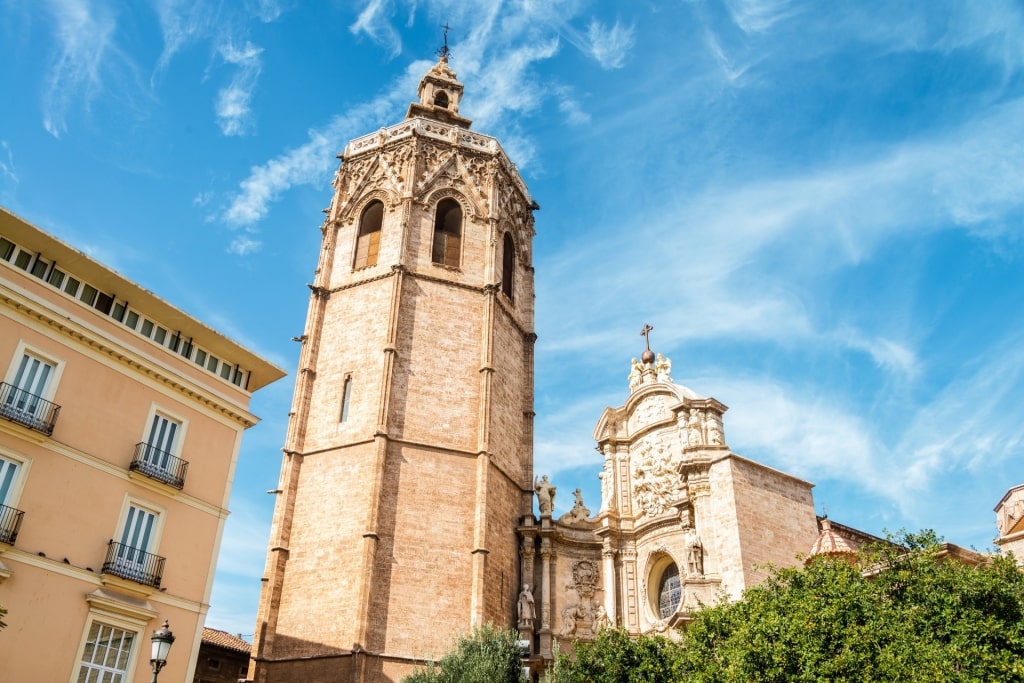
El Miguelete
Looming above the cathedral is the El Miguelete, a 164-foot high hexagonal and Gothic bell tower completed in 1424. For a glorious view over the Ciutat Vella, climb the spiral staircase consisting of 207 steps to reach the belfry.
From here, the city spills out below while an 18th-century steeple rises higher still, reaching toward the heavens.
Peek Into Valencia Basilica
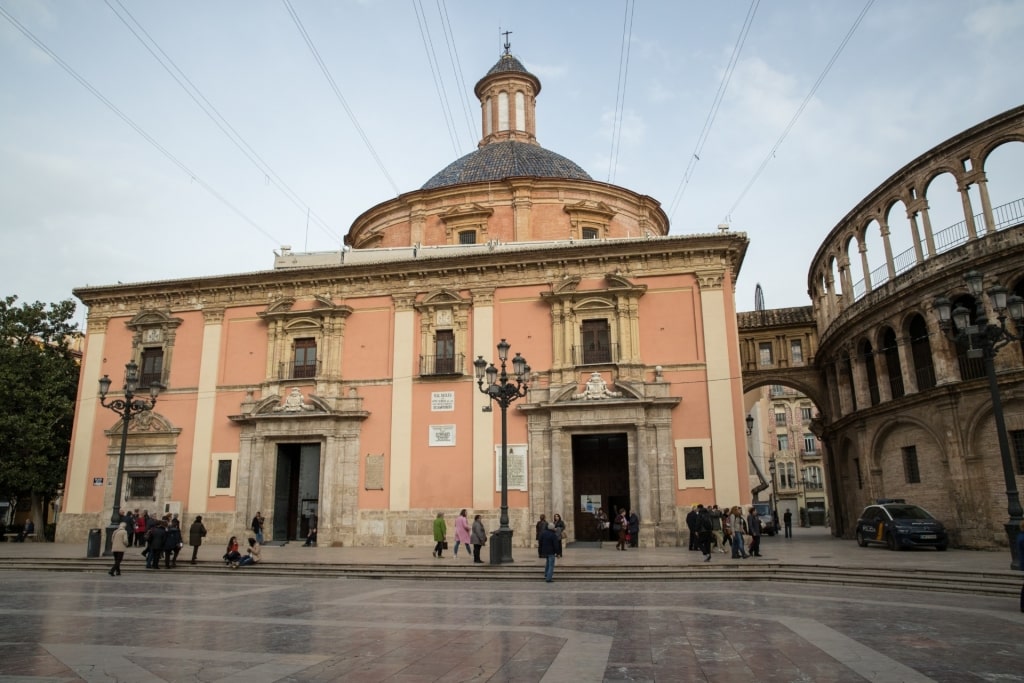
Basilica of the Virgen de los Desamparados
Behind the Cathedral, the salmon-hued Basilica of the Virgen de los Desamparados is another of Valencia Old Town’s finest religious buildings.
Relatively modern by Valencian standards—construction was completed in 1667—the baroque church pays homage to the city’s patron saint.
The roof’s dome, which has a peculiar position off-center, is adorned with the magnificent frescos of Antonio Palomino, which will naturally lead your eyes upwards. Before leaving, don’t miss the small chapel tucked away behind the altar, easily accessed by following the staircase.
People Watch on Pretty Plazas
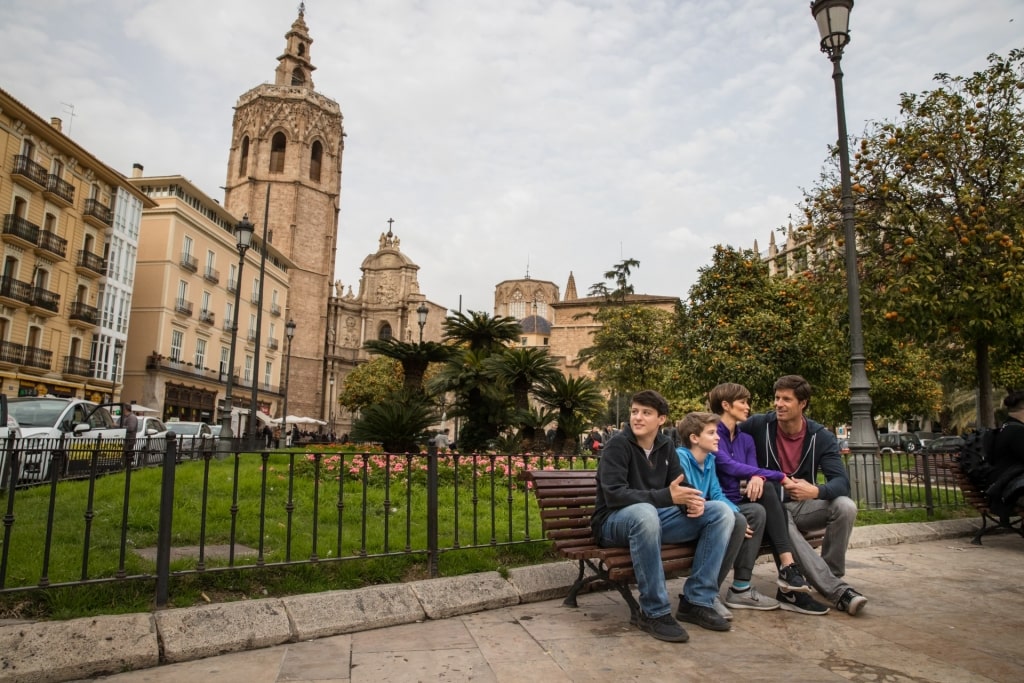
Plaza de la Reina
On either side of Valencia Old Town’s Cathedral, two pretty plazas provide the perfect place to settle in for a spot of sun-soaked people-watching.
In front of the El Miguelete Tower, the popular Plaza de la Reina is flanked by lively restaurants set against the impressive cathedral backdrop. It’s a fantastic spot to enjoy an al fresco lunch, though it’s best to arrive a little early to ensure a table with the best view.
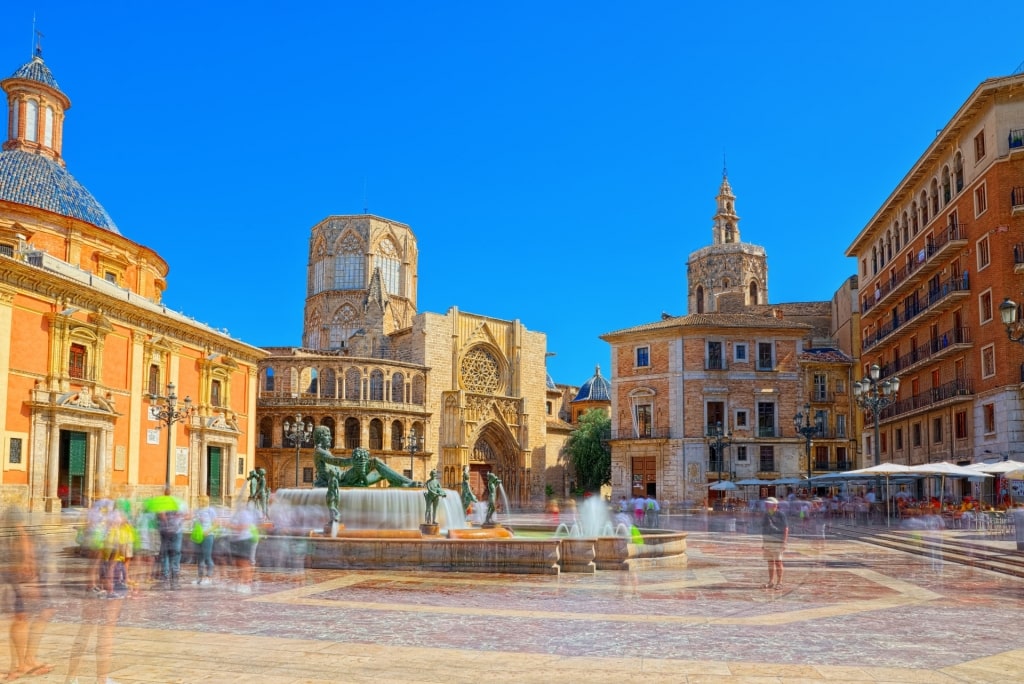
Plaza de la Virgen
Behind, the Plaza de la Virgen, with its sculptured Turia Fountain and magnificent composition of architectural style, is an equally wonderful place to take a sightseeing break—especially while enjoying a refreshing glass of Aigua de València.
Sip an Aigua de València Cocktail

Aigua de València
While agua may mean water in Spanish (aigua in Valencian), this popular local cocktail is anything but teetotal-friendly.
Best enjoyed from a jarra (jug) on one of Valencia Old Town’s open-air terraces, this fruity beverage is a refreshing tipple on a sunny summer’s afternoon.
Making use of the region’s acclaimed cava (sparkling wine) and equally celebrated citrus fruits, the original recipe calls for gin, vodka, orange juice, and cava to be combined into a delightful, but certainly not low-alcohol, fruit punch.
Invented at Valencia’s Cafe Madrid—now renovated and reopened—in 1959, the drink has become an iconic part of Valencia’s culture and can be sampled in bars across the city.
See Roman Ruins at La Almoina Archaeological Museum
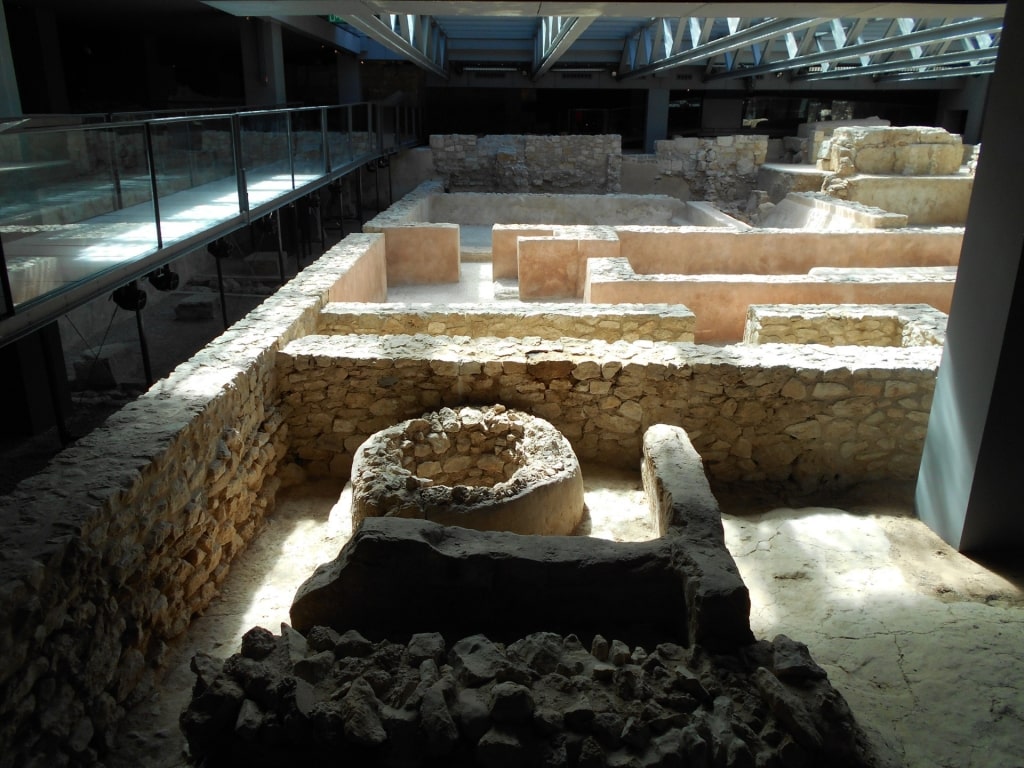
La Almoina Archaeological Museum Photo by Simon Burchell on Wikimedia Commons, licensed under CC BY-SA 4.0
Following the area’s prehistoric beginnings, the Romans first founded Valentia Edetanorum—as it was named then—in 138 BC. Situated on the river’s banks, the settlement connected with the Via Augusta, the main road linking Andalucia to Italy.
To witness some of the empire’s contributions to the city, head to La Almoina Archaeological Museum, housing remnants spanning from Valentia’s founding until the Middle Ages.
With an impressive archaeological collection including Roman ruins from the forum, such as the porticos, burial tombs from the Visigoths, and part of the Moorish alcázar, it’s a true journey through the various stages of Valencia’s history.
Tour Valencia Town Hall’s Museum
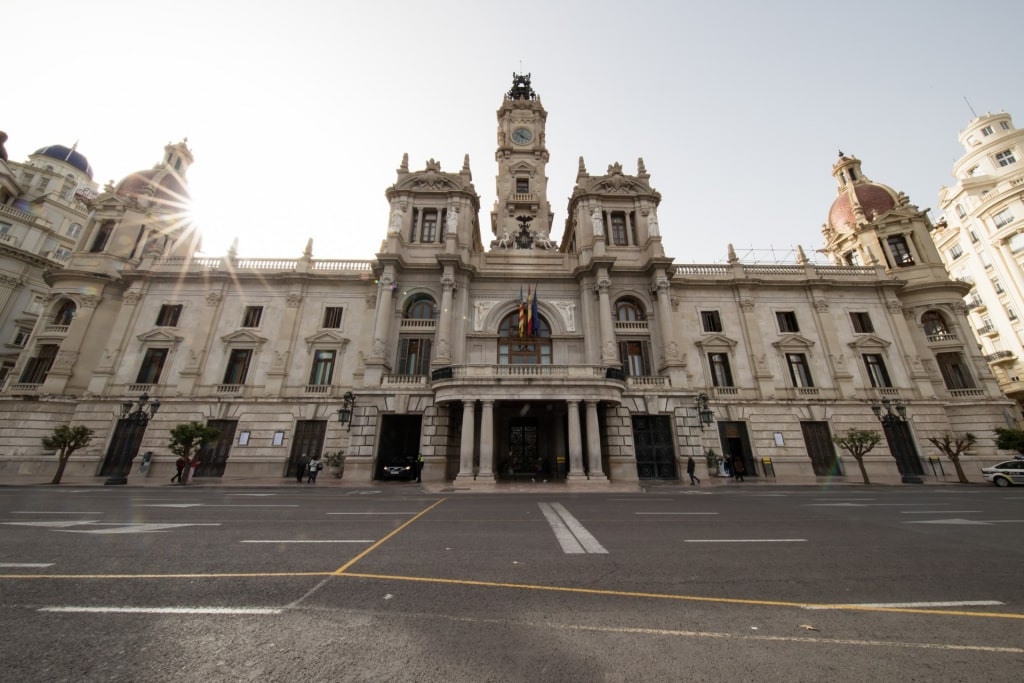
Town Hall
Serving as a central nucleus for Valencia Old Town, expansive Plaza del Ayuntamiento was once home to an underground flower market.
Nowadays, a handful of flower stalls remain above ground, and the square is flanked by impressive architecture, such as the baroque-meets-modernist Town Hall.
Inside, you’ll find the Municipal History Museum, allowing you to tour some of the grand chambers while learning more about Valencia’s history.
Exhibits include a near-800-year-old flag, the Pendón de la Conquista, magnificent tapestries, and the sword used by James I of Aragon, the founder of the Kingdom of Valencia.
Marvel at the Ceramics Museum
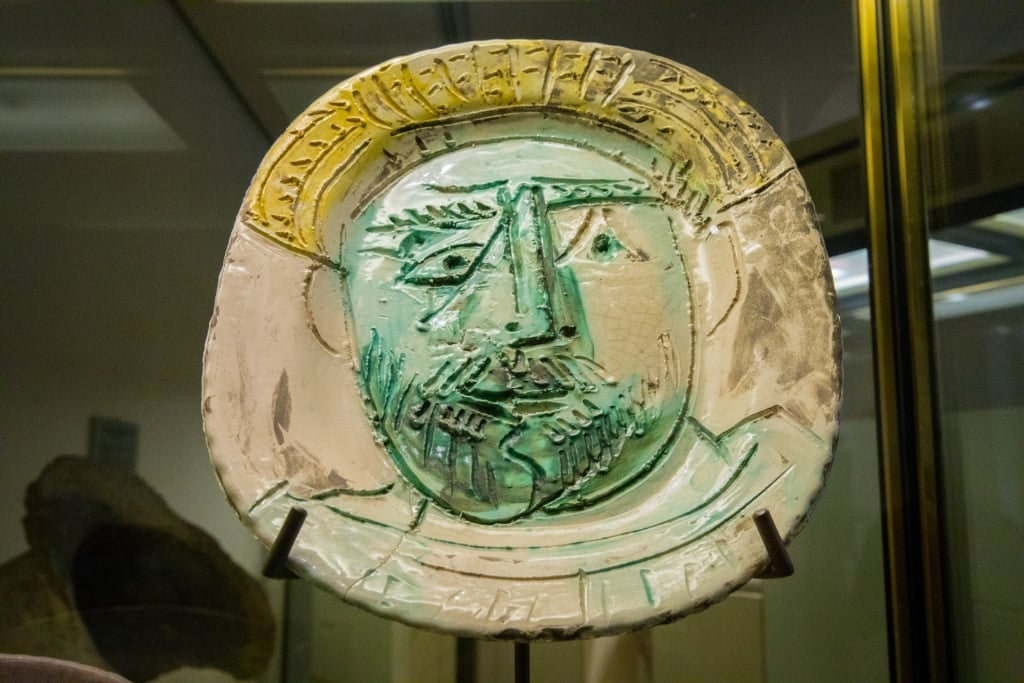
Ceramics Museum
In the heart of Valencia Old Town, the magnificent Palace of the Marqués de Dos Aguas has played host to the National Museum of Ceramics since 1954.
Comprising the country’s most extensive collection of pottery, you’ll find a vast array of Valencian, Spanish, and international ceramics on display.
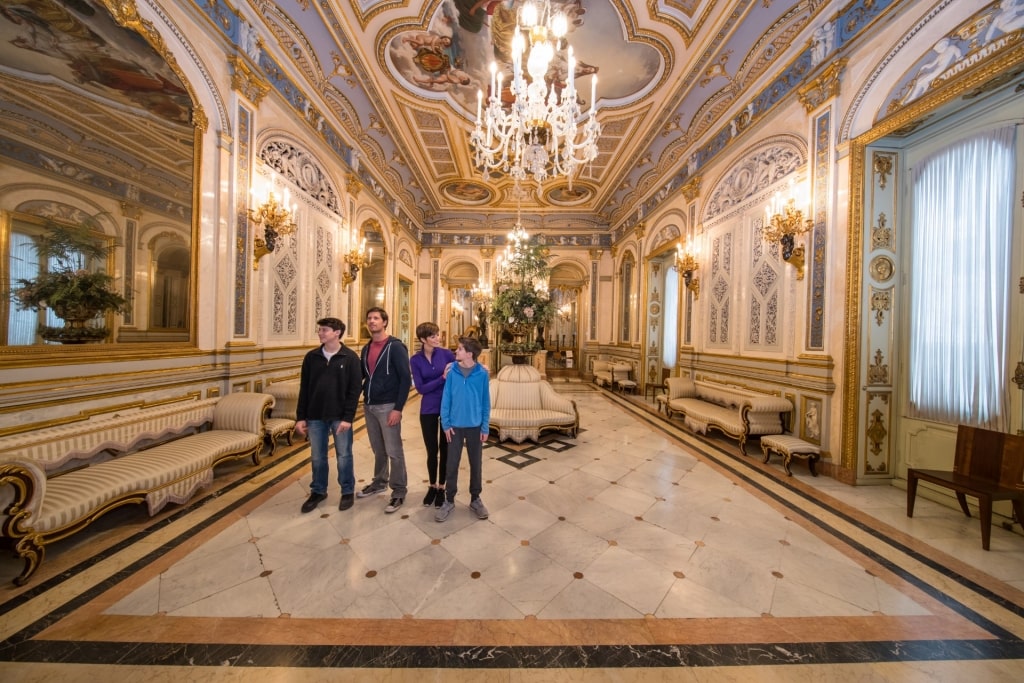
Ceramics Museum
Alongside spectacular pieces from the likes of Picasso, inside the rococo-style palace—re-constructed in gothic style during the 18th century—you can also witness noble heirlooms.
From the grand original furniture to the elegant 18th-century carriages, there’s much more than vases to admire in this luxurious space.
Devour Paella in its Birthplace
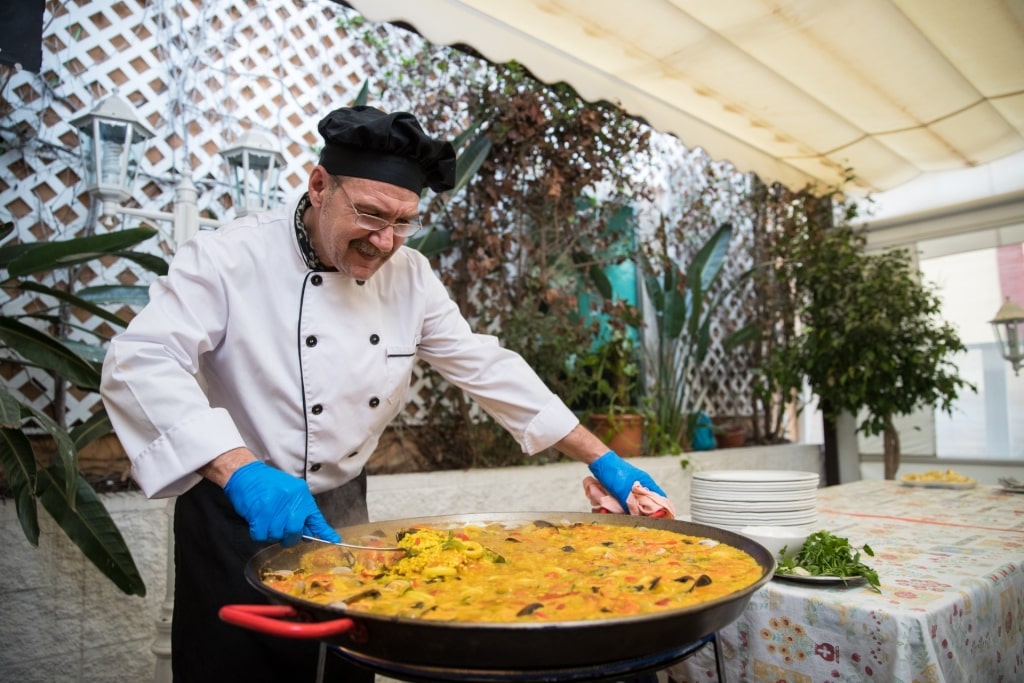
Paella
Paella, perhaps Spain’s most famous dish, has become an international culinary star, and while you’ll find it served in restaurants across the country, the birthplace of the recipe was here in Valencia.
Served in a large skillet, this seriously filling delicacy often makes the most of the coastal city’s bountiful supply of fresh seafood. Mussels and prawns are popular ingredients, although chicken and rabbit are common too, and most likely formed the original recipe.
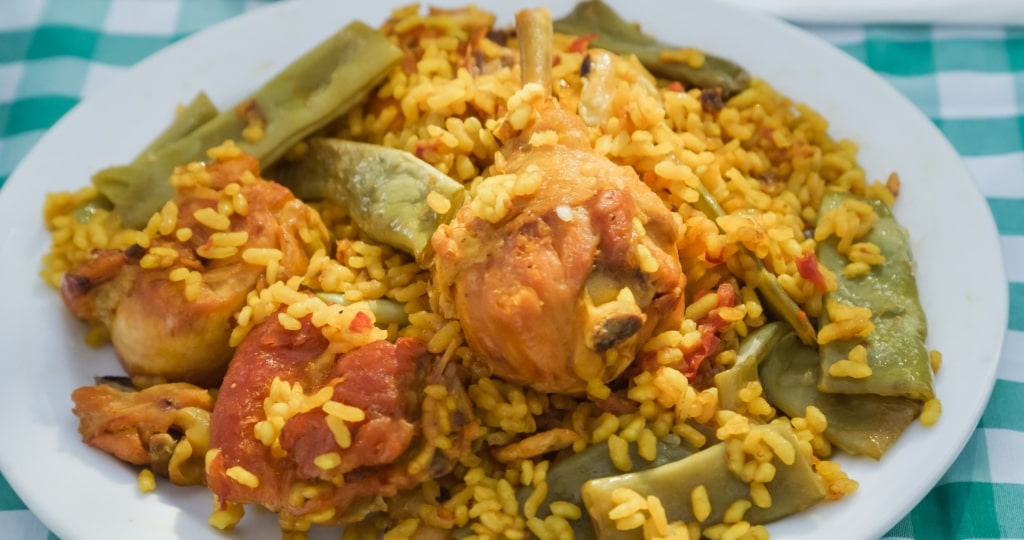
Paella
The meal’s base, though, is the highly fragrant arroz (rice), infused with saffron. Introduced to the region in the ninth century by the Moors, this beloved staple ingredient has been cultivated here ever since.
Pause at Plaça Redona

Plaça Redona
Valencia’s Old Town is dotted with grand squares and meeting places to soak in the atmosphere, but as the name suggests, Plaça Redona is rather special.
Redona means round in Valencian, one of two official languages spoken in the autonomous community of Valencia, and this circular plaza is a fascinating place to while away an hour.
Surrounded by handicraft shops perfect for Spanish souvenirs and bars ideal for people watching, the sun-kissed and fountain-dominated “square” has been a popular tucked-away meeting spot since the 1840s.
Enjoy a Glass of Horchata a Valencia

Horchata a Valencia
If you find the sun-bleached streets of Valencia Old Town leaving you a little worn out, slip into the nearest shaded spot and order a glass of horchata. This milky-appearing drink has been a typical beverage in Valencia since the 13th century, although its origins stem from North Africa.
Alcohol-free and created from crushed tiger nuts (actually the root of a sedge plant), the sweet drink is usually flavored with cinnamon and a touch of citrus. Order your horchata with a side of fartons (a typical sweet and elongated spongy bun) for the complete local experience.
Climb the Tower of Santa Catalina Church
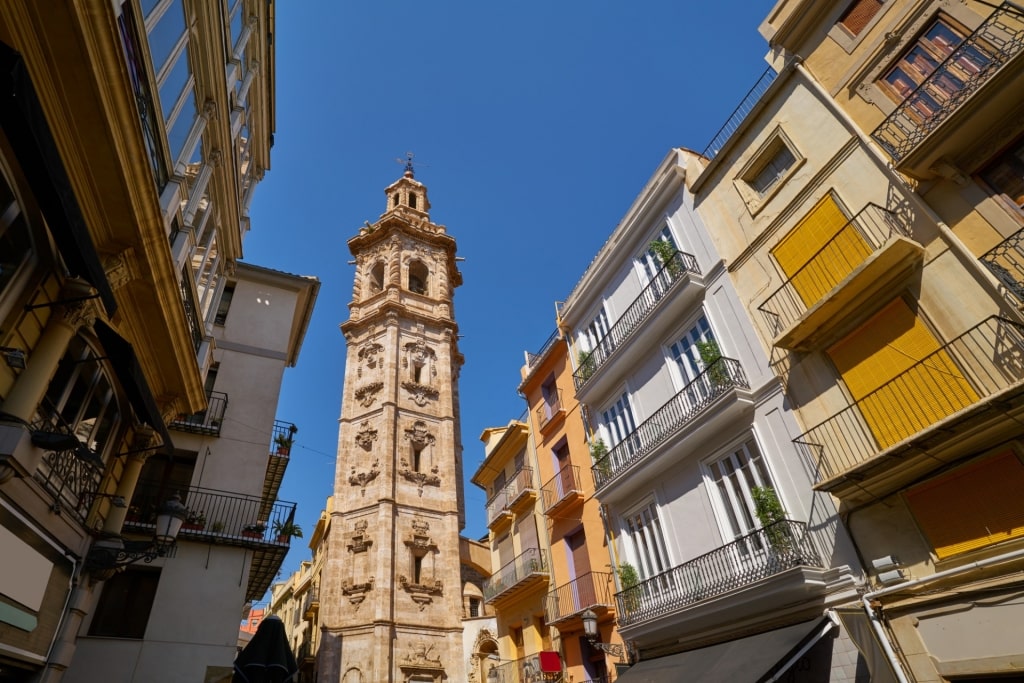
Santa Catalina Church
If you’d prefer your tower panoramas to include views across Valencia’s Cathedral rather than from it, climbing to the top of Santa Catalina’s Tower is an excellent alternative to the cathedral’s El Miguelete.
Moments from Plaça de la Reina, the Church of Santa Catalina dates from the Middle Ages, although the baroque tower came a few centuries later.
While the gothic interior of the church and its chapels are a delight, the real magic comes once you’ve climbed the stairs to the top of the hexagonal bell tower. From this prime position atop the city, the sweeping vistas of the Ciutat Vella are spellbinding.
Trace the Old Walls and Gates
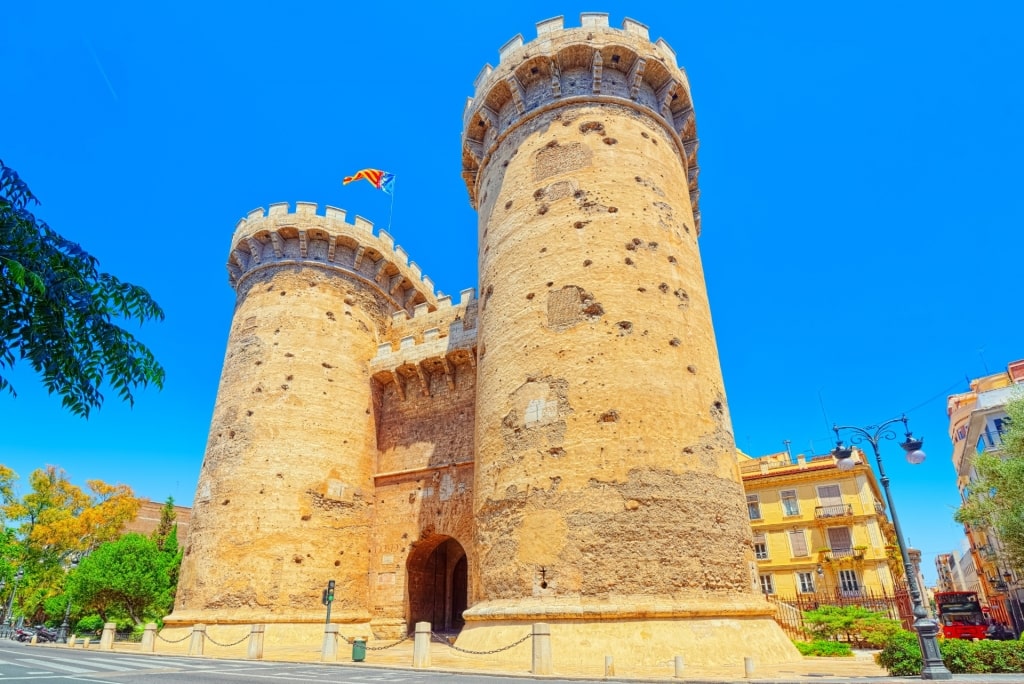
Quart Towers
During medieval times, Valencia Old Town was surrounded and protected by towering walls dotted with 12 imposing entry gates.
Sadly, in the 19th century, these walls were knocked down, though luckily, two of the original entranceways remain standing. For an idea of how the Ciutat Vella was defended many centuries ago, one of the best things to do in Valencia is to take a stroll to trace the long-lost fortifications and walk under the two remaining gates.
The Quart Towers, historically known as Torres de la Cal, were constructed in the 15th century and retain their Gothic presentation. If you look closely, you’ll spot the wounds of cannon balls pressed into the stone, left after the 1808 war with the French.
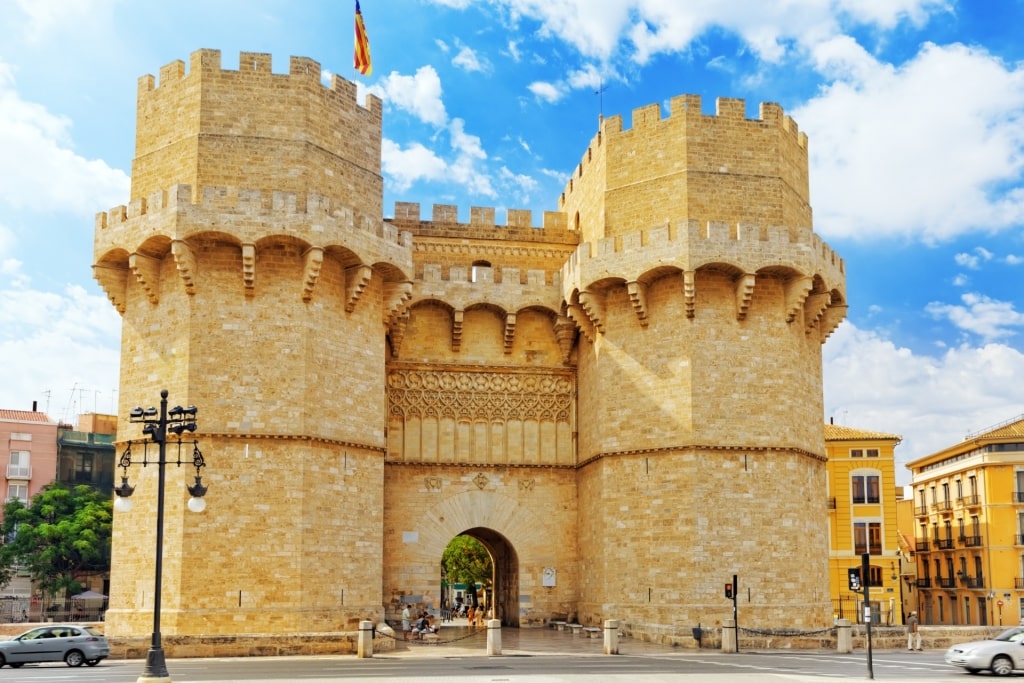
Serranos Towers
On the other side of the Old Town, the crenelated Serranos Towers in El Carmen hail from the late 14th century and served as one of the key entrance gates to the city.
After passing under the arched portal, you can peer inside the structure, as the back walls have been removed to allow a glimpse at the vaulted domes inside.
Admire the Church of San Nicolás’ Ceilings

Church of San Nicolás
For a frescoed-ceiling feast, head inside the Iglesia de San Nicolás de Bari y San Pedro Mártir de Valencia, known as Valencia’s answer to the Sistine Chapel.
Dating from the 15th century, the church has undergone various remodels over the years and is now a mesmerizing medley of gothic and baroque.
The star of the show is the recently restored and highly detailed paintings depicting scenes of the church’s namesake saints’ lives. These incredible artworks from Dionis Vidal adorn the magnificent ribbed and vaulted ceiling, ensuring your eyes are naturally drawn upwards the second you enter the jaw-dropping yet serene space.
Taste Local Produce at Valencia Central Market
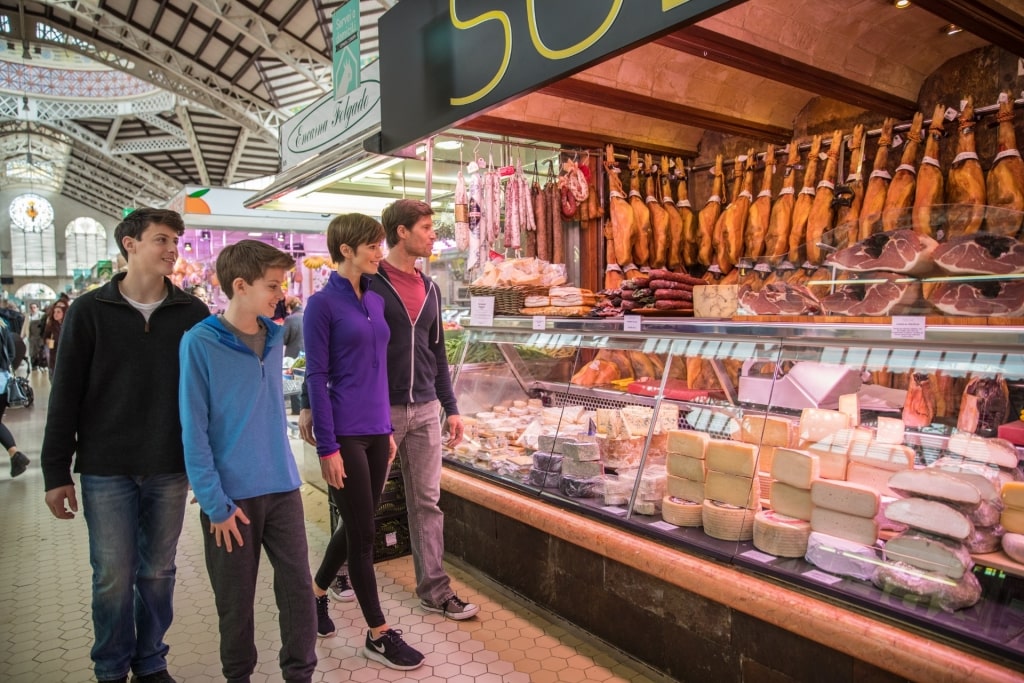
Valencia Central Market
No visit to Valencia Old Town would be complete without a visit to Mercat Central, Valencia’s Central Market.
Traders have been selling their deliciously ripe fruit and vegetables here since 1839, initially from open-air stalls, until a mammoth, near 15-year project to construct the current building began.
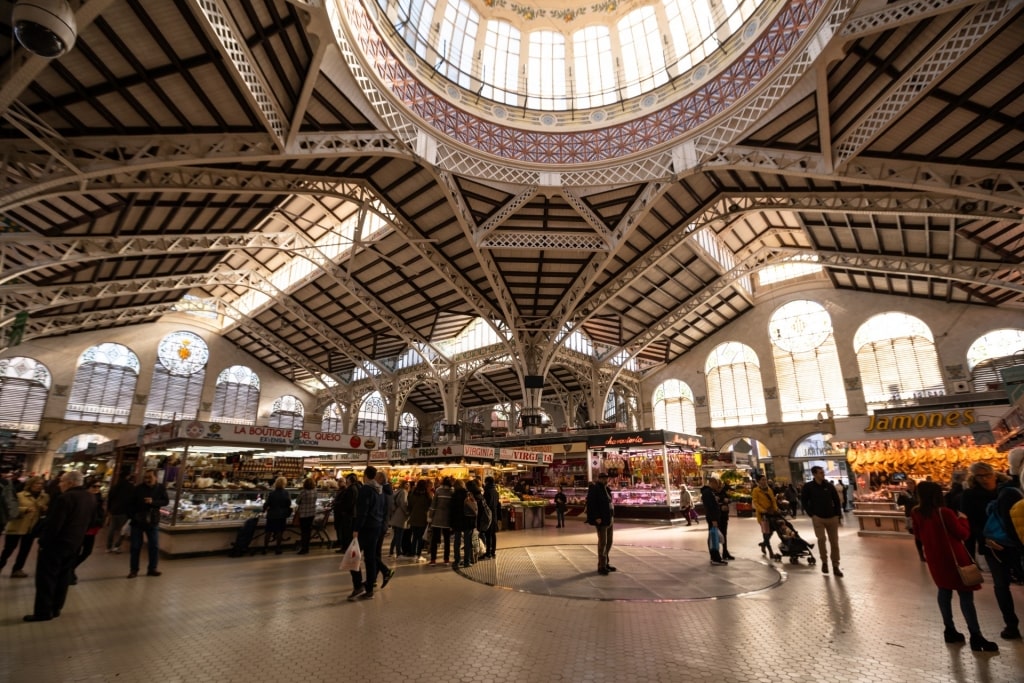
Valencia Central Market
Completed in 1928, the vast space not only boasts of being the largest fresh produce market in Europe, covering some 86,000 square feet, but also one of the most beautiful.
Inside the almost cathedral-like design, crafted from iron columns and stained glass, you’ll find all the flavors of the Mediterranean spread out across more than 1,000 stalls and vendors.
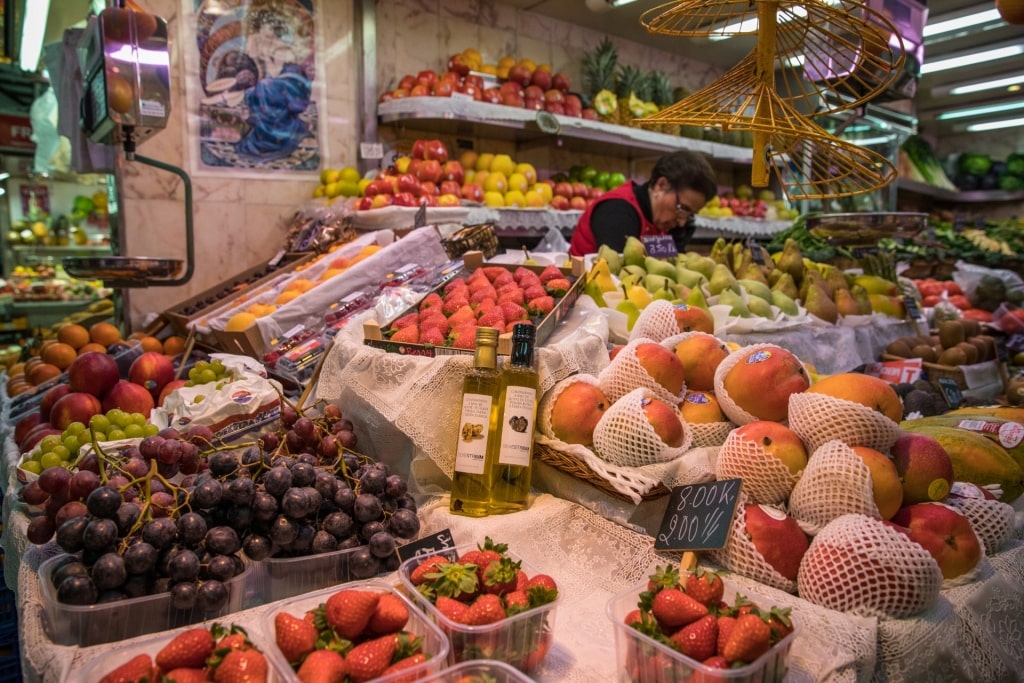
Valencia Central Market
From freshly-picked oranges and the ripest of tomatoes to dried fruits, nuts and cold cuts, you’ll be treated to a spectacle of how the locals use seasonal ingredients to craft their famous Valencian dishes.
After soaking in the atmosphere, you can settle in at the market’s Central Bar for a quick coffee and the tapas that Spain is known for, allowing a moment to pause and fully appreciate the Valencian Art Nouveau architecture.
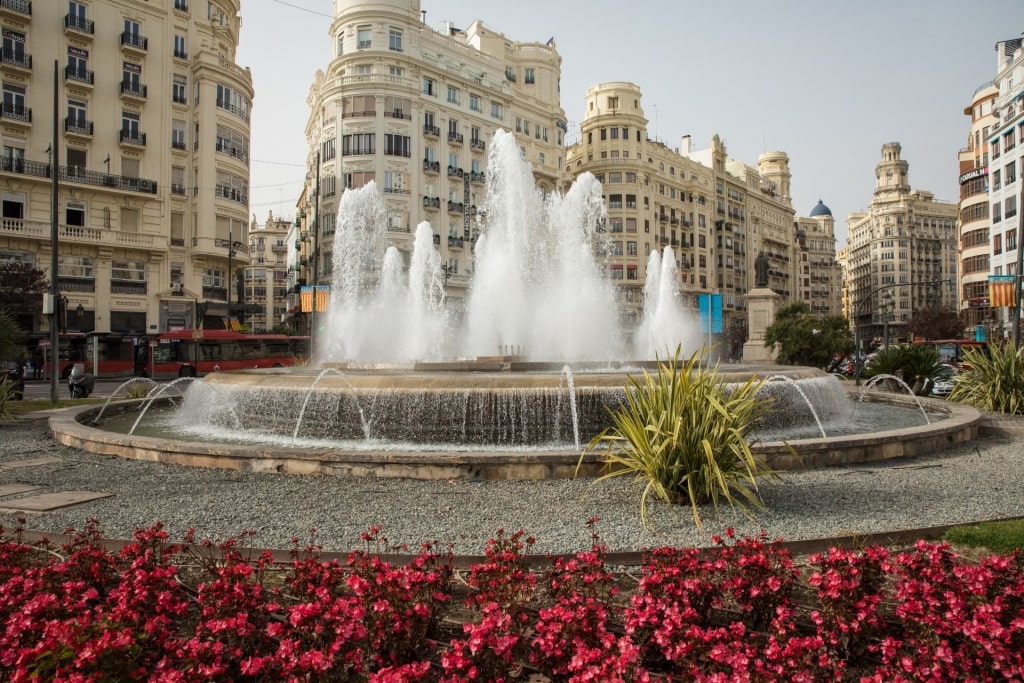
Old Town
Excited to explore Spain’s Mediterranean cities and coast on your next vacation? Browse Celebrity’s cruises to Valencia to plan your perfect itinerary.


